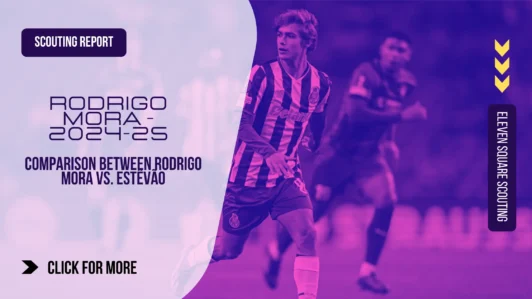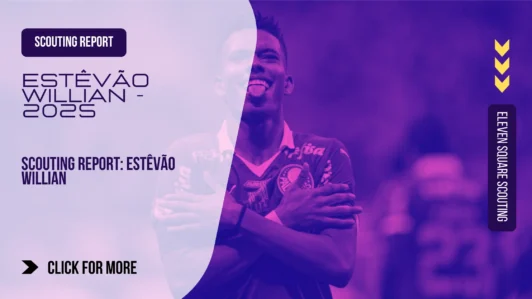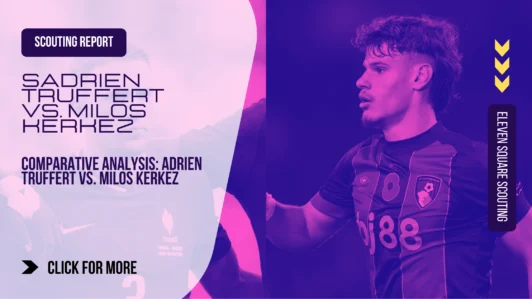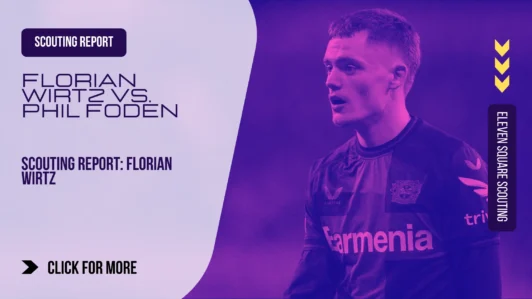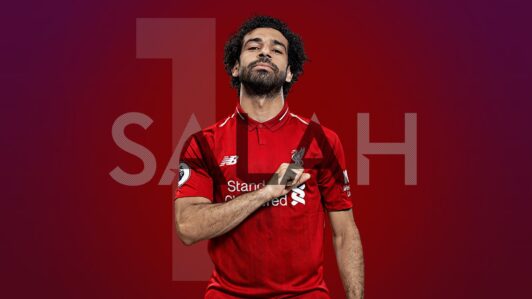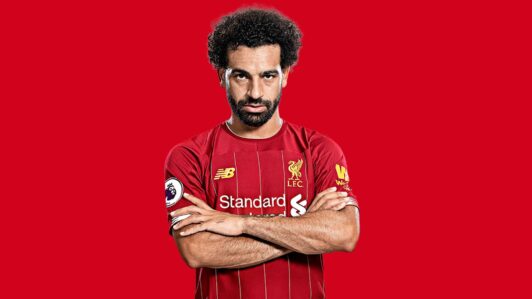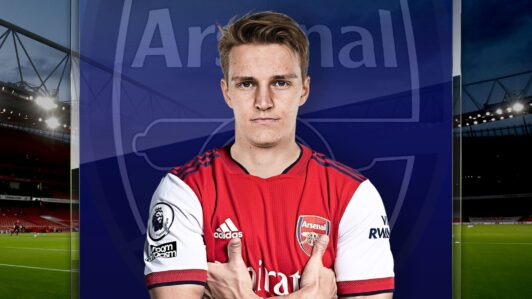Rodrigo Mora is rapidly emerging as one of the most exciting young talents in Portuguese football. At just 18 years oldContinue reading Rodrigo Mora: Portugal’s Next Creative Gem!
Estêvão Willian: Brazil’s Next Electric Winger 2025
A closer look at his stats per 90 minutes paints the picture of a fearless, high-volume dribbler with a strong attacking mindsetContinue reading Estêvão Willian: Brazil’s Next Electric Winger 2025 →
Scouting Spotlight: Christ Tapé – Hidden LB Talent
Christ Tapé, a 19-year-old linebacker from AC Horsens in Denmark’s 1.Division, has shown remarkable potential in the 2024/25 season.Continue reading Scouting Spotlight: Christ Tapé – Hidden LB Talent →
Scouting Report: Adrien Truffert – Is He Bournemouth’s Complete Left-Back?
Adrien Truffert Joins Bournemouth – A Defensive Upgrade with Attacking Flair, Replacing Liverpool-Bound Kerkez?Continue reading Scouting Report: Adrien Truffert – Is He Bournemouth’s Complete Left-Back? →
Hugo Ekitike vs Benjamin Šeško – A battle of young talents!
Clash of the Bundesliga’s Future: Hugo Ekitike vs. Benjamin Šeško – A Statistical ShowdownContinue reading Hugo Ekitike vs Benjamin Šeško – A battle of young talents! →
Scouting Report: Florian Wirtz – The Bayer Leverkusen Maestro on Liverpool’s Radar
Scouting Report: Florian Wirtz – The Bayer Leverkusen Maestro on Liverpool’s RadarContinue reading Scouting Report: Florian Wirtz – The Bayer Leverkusen Maestro on Liverpool’s Radar →
Analyzing Mohamed Salah’s Performance in Premier League 2022/2023
Mohamed Salah, the dynamic forward of Liverpool F.C., stands as a beacon of excellence in this elite circle.Continue reading Analyzing Mohamed Salah’s Performance in Premier League 2022/2023 →
Player Analysis: Mohamed Salah
Explore the in-depth player analysis of Mohamed Salah, the Egyptian football sensation. Discover the secrets behind his extraordinary speed, precision, and goal-scoring Continue reading Player Analysis: Mohamed Salah →
Player Analysis: Martin Ødegaard
Introduction Martin Ødegaard, born on December 17, 1998, in Drammen, Norway, has emerged as one of the most promising football talents of his generation.Continue reading Player Analysis: Martin Ødegaard →

